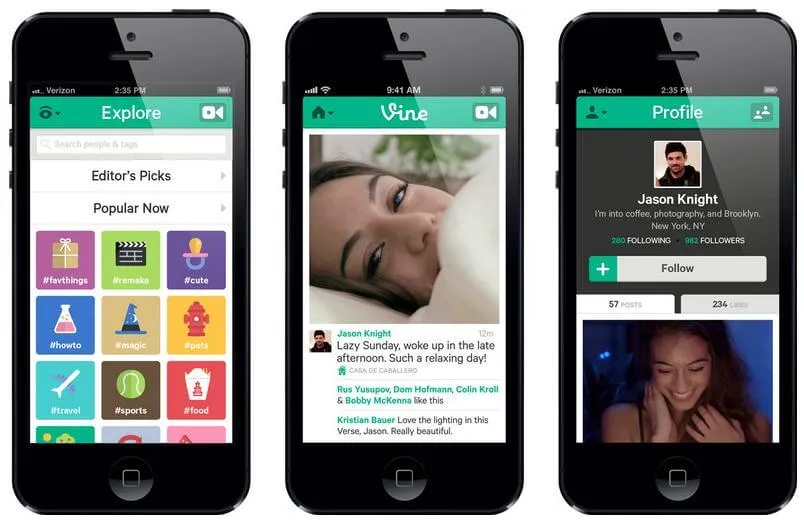Why Was Vine Shut Down?
The company behind Vine was acquired by Twitter in late 2012. At that time, the platform was a third-party platform that displayed video content on Twitter. Twitter wanted to make these platforms obsolete and wanted to integrate Vine into its platform. In order to achieve this goal, it acquired several people from the company, including Kroll, Hofmann, and Yusupov. The Vine application was released for iOS devices on January 23, 2013. It had its fair share of problems on launch day, which resulted in video sharing being disabled for some users due to server-related bugs.
Lack of monetization
While Vine had many high-quality creators, it was difficult for it to monetize their efforts. Because of the lack of monetization opportunities, the business failed to generate any revenue and was forced to shut down. Vine could have earned revenue by offering direct sponsorships for the top creators, but instead the company opted for organic growth. As a result, a great amount of influencers left the platform and moved to other, more profitable platforms.
Though Vine had been around for almost four years, the app failed to gain traction and monetization. Eventually, it fell victim to Instagram, which took market share from Vine. It was not sustainable to continue burning money while losing market share. Vine’s creators have since left Twitter.
In 2014, Vine’s founders had a high turnover of staff. The general manager Dom Hofmann stepped down in January. Kevin Kroll became general manager in April. The founders later reconciled and became friends. The company started out as a video editing tool, but soon added a social component to it. After testing the app with users, Twitter contacted Vine to acquire the platform.
Lack of stable leadership
When a startup is struggling, stability is important. Having the founder stay on the board is ideal as he knows the business best and is incentivized to keep the company afloat. Unfortunately, Vine’s parent company had conflicts with its founders, which affected business decisions.
A lack of stability in the leadership of a startup can lead to the entire team being affected. This is especially true when it comes to a startup that is a bit out of the mainstream and is facing many challenges. Vine failed to grow its audience and revenues, and faced several rivals. These rivals had much higher funding and were able to entice its users and content providers.
Although Vine managed to survive for four years, it could not keep up with its competitors. As a result, it lost market share to Instagram and other similar sites. Because Vine was unable to maintain the same level of growth, it was unable to continue as a business.
Lack of support for influencers
Vine’s failure to monetize its platform was largely attributed to a lack of support for influencers. As a result, creators turned to rival platforms like YouTube, where they can earn up to 55 percent of advertising revenue. But unlike YouTube, Vine failed to provide its creators with a viable monetization model, and their creators soon grew disillusioned and left the platform.
Despite the fact that Vine was successful for almost four years, the company was never profitable. The platform was losing its market share to competitors like Instagram, and it was burning money. This wasn’t a sustainable model for a startup. In October 2015, Twitter laid off 300 employees, including Rus Yusupov, its last remaining member.
As a result, many Vine influencers and superstars ceased to upload videos. Even though Vine was one of the first video sharing apps, its limitations made it an outdated platform for influencers. After the launch of Snapchat, the industry has progressed much more slowly. The popularity of animal videos has skyrocketed and influencers who used Vine to make their living have been forced to move onto other platforms.
Lack of advertising
Vine was a video-sharing service that was struggling to make money. The videos were too short to get noticed, and the platform did not have a viable monetization strategy. Even though it had a massive number of users, the company was not making any money. The lack of advertising was one of the primary reasons for the shutdown. The lack of revenue made the startup reluctant to test monetization strategies. This is a common problem with hyper-growth network-effect startups. Eventually, the deteriorating financial situation makes the founders reluctant to continue service.
While Vine’s popularity and engagement were great, the platform’s lack of advertising made it impossible for the company to survive. As a result, Twitter dropped Vine. This caused many creators to move to other platforms. Additionally, many users with more than one thousand followers moved away from Vine. Because Vine was not profitable, it was a huge expense for Twitter.
While Vine’s success was unlikely to have been the primary reason for its closure, it had a long history of personnel turnover. Its founders had an unusual amount of passion and knowledge, and they were motivated by substantial ownership stakes. As a result, founders usually perform better than company leaders appointed by the board.
